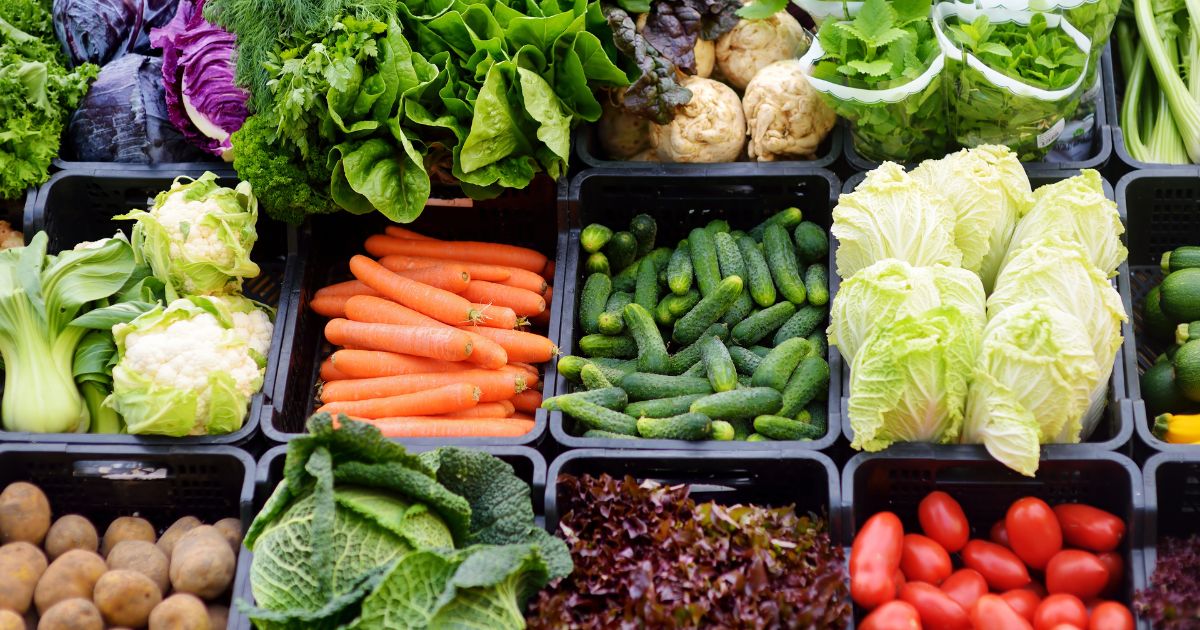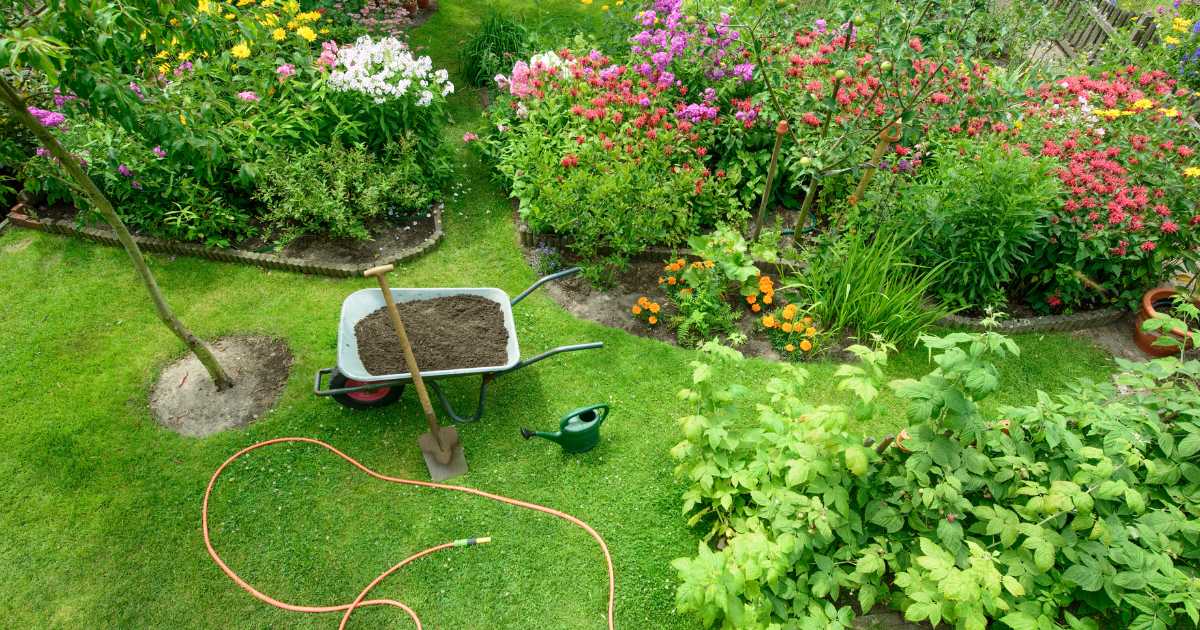The biggest difference between professional growers and gardeners is planning and design. Comparing professional market growers and home gardeners is important, for I truly believe that every grower should take their garden seriously like a pro. Food security, community beautification, family nutrition and other garden benefits are worth professional intention by any and all growers, no matter their scale or experience. Professional growers know they only get one shot at a successful spring, summer and fall and that each growing season only comes around once a year. This means a lifelong gardener only gets 30 to 50 tries at perfecting their production in-season. Compare that to a master musician who can practice hundreds of times before a single concert.
Professional growers know that good planning and design sets them up for success in order make every season count. With only one chance per year to gain in-the-field experience, professional growers know that the wintertime is for out-of-field experience building through crop research, seed orders, garden mapping and more.
For professional market gardeners, the wintertime is not “downtime”; indeed, it may be the most important season! The saying “60 percent design, 40 percent action” is one that is very important for a gardener who wants to truly succeed. If you want to get on top of the weeds, have outstanding yields and a balanced summertime that includes nature hikes and beach days, well, then, you need to schedule winter planning sessions. These six garden planning to-dos are essential to maximize your summertime successes before you are in the thick of it. (Insert Image: ToDoList.jpg, Insert Caption for Image: “This is what makes “real gardening.” Wintertime means pro garden planning.”)
1. Assess what you want to grow and why.
For commercial growers, this is about market demand and your farm’s capacity to grow certain crops. For the home grower, however, your market analysis has more to do with what you want to eat. I would recommend simplifying your production plan (the plan of all the crops you intend to grow) to include only those vegetables you like to eat all the time and that you can grow well in your soil and space. For instance, do you have a small yard? Potatoes need a lot of space and can often be purchased from local farmers at an affordable price. They also need a large crop rotation if you get an infestation of potato bugs. Fresh salad, on the other hand, requires very little space, is easy to grow in succession and can be enjoyed all summer, and the grocery store lettuce is high on the list of contamination and food-safety issues.
Less is often more, and three crops is plenty for a first-time gardener, six for a return grower, and no more than 12 crops in any season—if you have the space. One of the biggest pitfall’s growers make is trying to grow everything they like. Consider cooperating with neighbours and bartering for a complete homestead supply, and then only growing a select amount of garden veggies in any one season, in order to focus your efforts for success.
Assessing your crop choices comes down to understanding what will grow well in your soil, and what you can grow well from experience learned and gained. The wintertime is good for research and decision making. Choose your three to 12 crops to grow for the season. Make sure you understand how to grow these properly. Review books on gardening; research growing practices online; find resources that are crop specific, such as seed catalogues, with their great information, as well as other crop-specific books or articles. The reason professional gardeners are good at growing their veggies is because they took the time to learn how to produce the crop to perfection from seed to plate. Again, better to grow less, research it well, and succeed. This is true community food security: food abundance in our yards, shared, traded and sold.
2. Make a seed order.
Every garden needs a crop plan that helps them organize what, where and how much to grow. Key to this process is a seed order that is based on your expected plantings. This is a process of working backwards from the needed quantity (say, a pound of carrots) to the seeds you need to order to grow that quantity. There is a number of crop-planning software available, as well as books on the subject for more experienced growers. This can also be done in Excel. Most of the information you need is available through seed catalogues and resources online, such as lists of vegetables and the average seeding rate needed. What you need to know for all the crops you want to grow: average yield per row foot, seeding rate per row foot, and how many seeds are in a gram for a given variety. (A “row foot” is 12 inches of row in your garden bed that is seeded or planted into any crop. Some garden beds may have one, two, three or even more rows planted together. If your garden bed has three rows of carrots, then every 12 inches of garden bed actually has 3 row feet. A row foot is a great measurement for understanding seed needs and yields.)
With this information, you can take the yield you would like and then calculate the number of row feet in your garden you will need to have to seed, the quantity of seed needed to plant that many row feet, and the amount of seed in a gram or ounce. Using this simple calculation, you can then order a weight of seed from the seed catalogue, based on your desired yield. “But I usually just get a packet…” you might say. Yes, but as you simplify the number of crops you grow, as well as focus on growing more of what you can do best and sharing and trading with neighbours, so, too, will you be able to order seed in larger quantities and at more affordable prices. You will grow more of what works well, and your garden will grow. Good seed is essential and valuable. Calculate the seed you need and budget for success.
My favourite crop-planning manual is Crop Planning for Organic Vegetable Growers by Frédéric Thériault and Daniel Brisebois. It is simple and straight forward.
3. Make a garden map.
A garden map helps you organize your crop plan into the physical frame of your landscape. A good garden map is really a blank template of your garden beds that you fill in each year. In fact, you might have several templates to show what you will be growing in spring, summer and fall. This can be drawn in a journal, on graph paper, using software, or—my preference—simply in Excel. Excel offers great solutions to build out a map of garden beds using the rows as garden beds and the columns as garden bed divisions. You can also use the colour fill and text features to help organize you further. (Insert Image: GardenMapTemplate.jpg) Garden maps are solid visual records of what you have done and will do. This includes planned dates of bed preparation, seeding, transplanting, cover cropping and more, and can be updated to reflect the actual dates later. There is nothing like knowing where you are going, to get there in good order. These maps are also useful for recording data that’s specific to your soil type, weed pressure and average moisture of your garden landscape. I have entire garden maps used for this Garden Environment Mapping.
You ask and answer many questions through garden maps. Where is my garden wettest? I could save this for summer melons. Where is there invasive grasses? I could put weed barrier over this and retire it for a year. Where is there sandier soil? This is better for some crops, like potatoes.
4. Create and review your garden journal and do research.
You should have a garden journal and take time in the winter to review your notes. There is really nothing more important, especially as you are building your garden skills, than a journal. As growers, we should take simple notes every single day. It doesn’t have to be long notes or poetic, but it should be daily and provide insight into what you did, what happened and any obstacles you faced in your gardening. I highly recommend writing a journal where you only take notes on the right-hand pages, leaving the left-hand pages blank. This provides you with space beside your initial notes to digest them in the wintertime and turn them into action plans and to-do lists. A good garden journal can be a notebook full of to-do lists, crop-specific notes, design sketches and garden guild ideas. In the wintertime, these lists, sketches and notes can help you rebuild your crop plan and improve your production practices. It will help you make choices about tools or new varieties to trial, such as new varieties based on disease-resistance so you can counter-crop any issues you had, or new production practices you want to achieve based on a gardening obstacle you faced.
5. Order seeds, supplies and tools.
There is something to be said for going seed shopping in the spring, and visiting nurseries and running around and sipping coffee as you browse the racks… But there is also something great to say about having all your seeds organized by March 1 in your house and feeling the calm of preparedness.
One of the most important jobs a gardener can do is order all their seeds, supplies and any new tools before the snow has even started to melt. Not only will you be more prepared to get going the moment the ground is thawed, but you also won’t need to use valuable warm days ordering stuff. What is more, when you order in the winter, there are often better prices to be had and items won’t be sold out.
For instance, companies like High Mowing Seeds offer a seed CSA (community-supported agriculture). A CSA is a model where consumers pay in advance and receive discounted produce in season.
This model has been adopted by seed companies as well and helps growers plan in advance—you’ll also receive a discount if you pay in advance for your seeds and order early.
There are also many supplies—such as ground cover, row cover and irrigation—that you won’t have the time to wait for if you make the order at the last minute and the weeds, bugs and drought are already upon your garden. In addition, any new tools you want to try should be on hand early so you can use them right away. One of these critical tools is irrigation. Always have an irrigation plan and have all the tools at the ready to get all garden jobs done right.

6. Make a calendar and stick to it.
It is critical to have a calendar to help organize your daily, weekly and monthly jobs in the garden. Highlight critical weeks, such as the last spring frost, the first fall frost period, and the labour-intensive cherry-picking season. Your garden journal and other records will help you hone in on important dates over the years. Be sure to include the dates when you want to plant all your tender annuals (tomatoes, peppers, cucumbers), when you seed your fall storage veggies (carrots, beets, winter radish), and when you need to plant and harvest your garlic. You also want to put in the days that you want to dedicate to garden work, to help you have a routine of regular garden chores and routine days to enjoy other summer activities. You can use these days to prepare beds in spring, weed in summer, and harvest in fall. Remember to have a watering schedule and assume it will increase in the summer, when plants are big and temperatures are hot. A garden calendar commits you to a schedule, so the important dates are not missed in the thick of the summer garden goodness.
There are some key differences between home gardeners and professional growers. Home growers grow less food, on less land, and with less time, money and energy to commit. However, regardless of these factors, you will benefit from the six to-dos that all professional growers do in the wintertime, allowing you to maximize the time, space and energy you have while enjoying the extra abundance, beauty and simplicity you have gained through winter garden planning like a pro.
Zach is an educator, designer and grower who specializes in Edible Ecosystem Design. He consults widely with homes, farms, colleges, schools and municipalities across Canada and the United States, and through many biomes from Guatemala and South Africa to the Yukon and Mongolia.
Zach manages an award-winning farm with diversified food forest products, heirloom garlic, and a hardy tree nursery. His innovations have won three provincial awards and are featured in his first book: The Permaculture Market Garden.
Zach is the director of the Ecosystem Solution Institute, which is dedicated to the education, propagation and inspiration of ecosystem solutions for land use transition. The Institute oversees pathbreaking education sites, including an edible botanical garden near Ottawa, Ontario, and a suburban food forest in Winnipeg, Manitoba. Zach is passionate about how small actions - strategically linked - can make big change. His inspiring and empowering vision is presented in his latest book: The Edible Ecosystem Solution.













